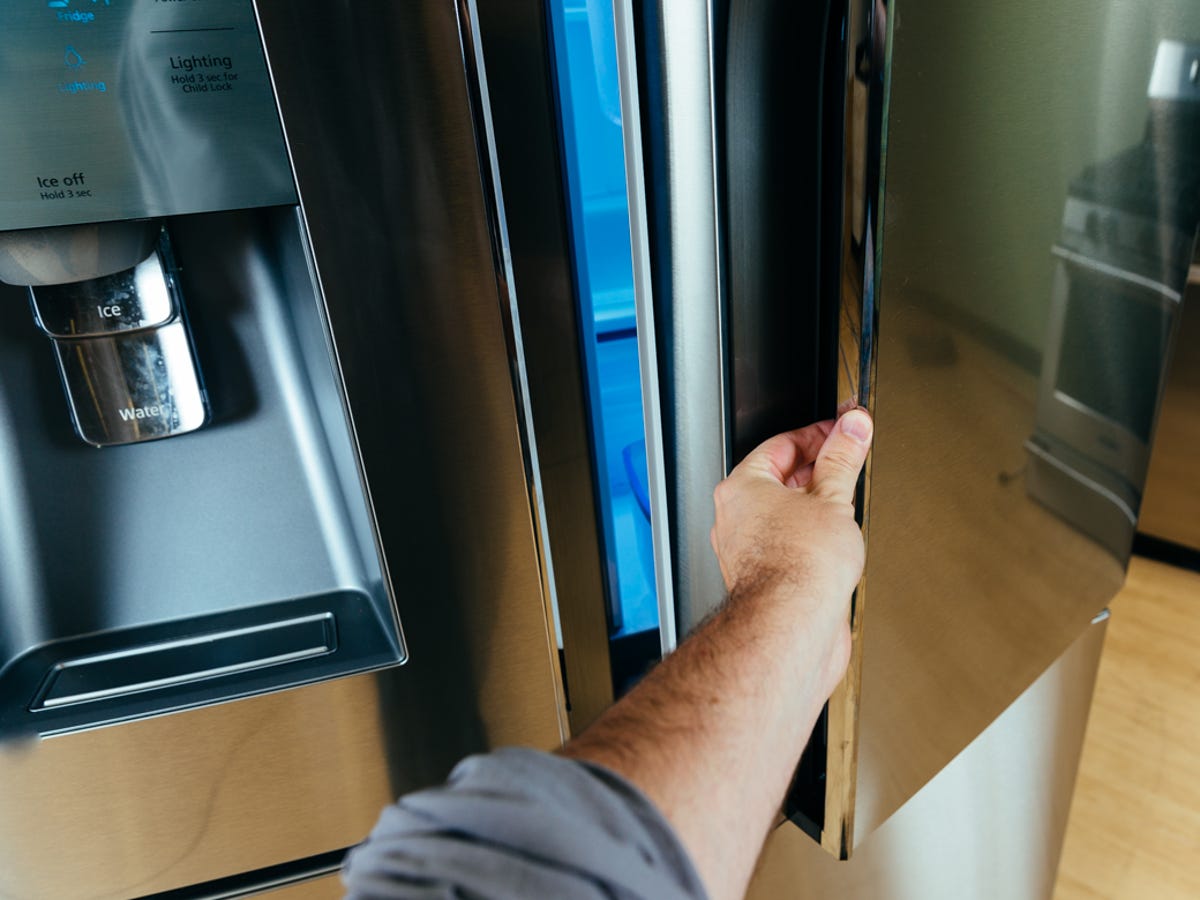Skip these five gimmicky fridge features
Shopping for a fridge filled with helpful features? Here are some we suggest you avoid.

Take a look inside today's refrigerators, and you'll find tons of new features clamoring for your attention. Some of them are genuinely useful, but plenty of them aren't. Here are five we think you should avoid.
In-fridge temperature zones
Lots of fridges these days offer a special drawer or compartment with its own dedicated temperature presets (GE even color-codes the one in this fridge with LED lights). They're cool and useful in theory -- but ones located inside of the fridge often don't perform very well.
Inaccurate temps
The problem is that these drawers won't ever have the same cooling power as the rest of the fridge, so they have a tough time hitting separate temperatures. We've tested several of them, and most of them barely make a difference.
Keep it separate
We say stick with fridges that put the adjustable temperature zone outside of the fridge. This usually means a dedicated drawer in between the fridge and freezer compartments, like in this LG model.
FlexZone
The "FlexZone" in Samsung's four-door models is another good example of an adjustable temperature zone done right.
Don't do Door-in-Door
The second feature you should steer clear of? Door-in-a-door compartments. LG popularized the feature with its line of "Door-in-Door" refrigerators -- but we think the feature is about as gimmicky as it gets.
Door-in-a-door-in-a-nutshell
Here's the basic door-in-a-door pitch: press a button on the fridge handle, and the front panel of the door will come open, revealing the in-door shelves without actually opening the fridge. It's meant to be a convenient way to grab drinks or condiments without letting cold air out of the body of the fridge.
The problem
The problem with these compartments is that they don't actually make anything more convenient. You're still opening a door and grabbing what you want -- same as before. In some cases, they make things less convenient. In this fridge, you can only access the butter bin from the front -- it's blocked off on the inside. And getting things in and out is a tight squeeze.
Flimsy feel
You have to open an extra door to get to the Door-in-Door shelves from the inside of the fridge. It doesn't block off the butter bin in this model, but it feels flimsy as hell. Oh, and that whole thing about keeping cold air in? Totally bogus. Door-in-a-door fridges almost always run a little warmer than plain fridges, especially in those in-door compartments.
King-size ice makers
Next up: king-size ice makers. Sure, a big ice maker is great when you need a lot of ice, but most of the time, you'd rather have that space in the fridge for groceries, right? Plus, when the ice maker's up on the top shelf like it is in this Samsung fridge, the door will need to bulge out awkwardly to catch the falling ice, which creates problems of its own.
Look familiar?
Here's an Electrolux model that takes a very similar approach. Less space in the fridge, and a big, ugly bulge in the door.
No headroom
See how cramped things are in the door shelf that sits below the bulge?
Slimmer is better
We prefer ice makers that stay entirely inside of the door, like the Slim Spaceplus ice maker in this LG fridge. It doesn't take up any space in the body of the refrigerator, and with no need for a bulge, it's easier to get things in and out of those door shelves.
Spillproofing gone bad
Number four: excessive spillproofing. Normally, we love shelves with spill-proof rims around the edges to help contain the fallout when you knock something over. But this Electrolux model takes things too far.
Style over substance
Instead of rims, the shelves are each a single piece of curved glass. They look fancy -- but those curves are totally impractical, since you can't sit anything flat on top of them. It's a big waste of storage space.
Smart fridges
Finally -- we've gotta call out smart fridges. Yes, they're finally starting to get pretty compelling, but it's still early. There are only a couple of models that interest us, and all of them are super-expensive, some prohibitively so. We aren't saying they aren't cool -- they just aren't worth it yet.

